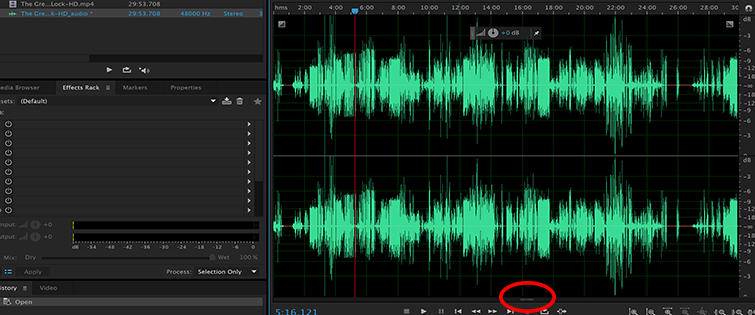In today’s post, Jeff will show you how the Auto Heal feature works in Adobe Audition.
- Audition After Effects Tutorial
- Audition After Effects Free
- Audition After Effects
- Audition After Effects
- Audition After Effects Template
Get Started with Audition Audio Mixing. Improve your audio editing by learning how to perform key tasks that work in both Adobe’s Premiere Pro and Audition. This allows you to finesse audio effects, automation keyframes, track and submix routing and more! How to Clean Up Audio in Adobe Audition. How-To #36: Audio in After Effects After Effects, AuditionWhile it’s not the best at it, After Effects can use audio for a number of different things.
Note: remember to watch the video tutorial we have created for a better understanding of Jeff’s instructions.
Let’s start!
Want to discover the fastest way to make cool After Effects videos? Download this free After Effects template: https://bluefx.net/store/free-files/free-after. After you apply an effect, you can adjust its properties using the Applied Effects panel. You can make an effect start and stop at specific times, or adjust the values of the effect over time by using keyframes. You can apply multiple effects to a clip, and you can apply the same effect numerous times to the same clip with different settings. This episode is for all the After Effects users who want to easily get their audio from the timeline into Audition for editing and multitrack composition.
So I’ve gone to Premium Pro. I sent this over audition. An Audition created a separate audio file called “Extracted – Audio Extracted.” You can name it whatever you want but that is the default name. It’s put Audio Extracted at the end of it.
I am going to switch to the Spectral Frequency View here.
The Spectral Frequency View – what does it do?
It shows audio frequencies, it’s pitch. It shows in the stereo because this was shot in stereo and a shot with a camcorder that recorded audio at 48,000 samples per second, which is typical for camcorders to record. That is a DVD quality audio, which is better than CD.
After Effects Academy Member Extra


Access your ‘Adobe Audition – Part 1’ Class in the After Effects Academy.
Jeff Sengstack will teach you about Adobe Audition.
I am going to change the view here, so you see the full frequency of this audio.
I am going to change this to hertz instead of pitch.
There we go. I am going to look across here.
I am going to change the view here, that is I am going to decrease the spectral frequency.
Audition After Effects Tutorial
So control shift down arrow is the way to do that because I want to be able to see those clips a little bit better.
There is a click right there. That little line there is a click. I am pretty sure. Let’s listen for a second. You probably can’t hear that click go by but that is a click.
What this represents here is the brighter the color, the louder the sound at that frequency. These are very low frequency here at the bottom of the scale and these are very high frequencies here, at the top. That little guy there represents a click.
I would want to go over and fix that. I can fix that. I can select it using this little marquee selection tool. I can select it by doing this.
Now I identified the click I should make this narrow but that is fine just like that.
Audition After Effects Free
Now I’ve identified that little area that creates that click sound and I go up to something called favorites. Again, I’ll explain this more detail later. This thing called “Auto Heal.” But I have a thing called “Just Auto Heal.” That is not on here.
Here’s the video tutorial:
It’s on other workspace. Let me go turn on the Auto Heal then I am going to raise the volume a little bit.
Because that is Auto Heal, reduce the volume a little bit, so raise the volume about 3db. I’ll listen to that click now and it’s gone. That little measure, we got rid of the click but didn’t change the quality of the audio.
Next, click over here. Now there is a click, I can see it. I’ll just marquee select that one. Do the same thing, Favorites – Auto Heal. Auto Heal has the tendency to lower the volume a little bit inside that little space. So I am going to increase the volume in that space like 3 decibels. I’ll explain that in a second. Now the click is gone. You can’t even see it anymore.
That is how you can use, make that workflow from Premium Pro Audition. Now I am going to save this, File – Save. I go back to Premier now and that Audio is now there. The extracted audio is now there.
It has replaced the old audio. That click that was there before is gone.
Thank you for watching this video. My name is Jeff Sengstack, an Adobe Certified Expert and a Lead Instructor here at BlueFx.net. If you want to watch this entire video lesson, as well as other live classes and After Effects crash courses. Then I invite you to check out the BlueFx After Effects Academy. Just click the link below this video to find out what we’ve prepared for you in the After Effects Academy.
These changes were implemented in the October 2020 release of After Effects. Equitable Language changes are included in the latest public Betas of Premiere Pro and Audition and will be available in the release versions later in 2021.
Terminology changes in Premiere Pro
Included in the latest public Beta and will be available in the release version later in 2021
| Previous name | New name | Location | Description |
| Master Clip | Source Clip | Icon in Project panel | A Source Clip is the representation of a piece of media in the Project panel. A Source Clip, and any parts of it, can be used multiple times in a sequence or in multiple sequences. |
| Master Clip Effect | Source Clip Effect | Effects Control panel | An effect added as a Source Clip Effect, which will affect every instance of that clip throughout a project. |
| Generate Source Clip for media |
| Access this as a command or as a (customizable) keyboard shortcut. | |
| Reassociate Source Clips |
| You can access this as a command or as a keyboard (customizable) shortcut. | |
| Master Styles | Styles | Essential Graphics panel | Use Styles to apply style presets to text and titles |
| Master Graphic | Source Graphic | Graphics menu | Use Upgrade to Source Graphic to create a Source Clip in the Project Panel from a graphic clip in your sequence. |
| Clip context menu | Use Upgrade to Source Graphic to create a Source Clip in the Project Panel from a graphic clip in your sequence. | ||
| Master Track Audio | Mix Track |
| Use Mix Track to combine the outputs of multiple audio tracks and buses. |
| Blacklist | Blocklist | System Compatibility Report | The Blocklist JSON files identify out-of-date drivers known to cause issues for Premiere Pro. |
| Loading plugins | Identifies plugins that create issues for Premiere Pro. |
Apart from equitable language changes, the Lumetri Presets reference imagery will now have new reference imagery (including the option to use a thumbnail of the current clip) in the Effects panel. You can use these presets to adjust the colors in individual video clips or whole sequences.
Terminology changes in Premiere Pro and Audition
Audition After Effects

Included in the latest public Betas and will be available in the release versions later in 2021
| Previous name | New name | Location | Description |
| Master Gain | Gain |
| Use Gain to adjust the input levels of your audio in different audio effects. |
| Enhance Speech: Male | Enhance Speech: Low Tone | Essential Sound panel | Use this effect to apply preset audio filters and compression to improve the sound of lower-toned voices |
| Enhance Speech: Female | Enhance Speech: High Tone | Essential Sound panel | Use this effect to apply preset audio filters and compression to improve the sound of higher-toned voices |
| Master Clock | Clock | Audio Hardware Preferences | Use Preferences > Audio Hardware to choose which input and output other audio hardware should sync to. |
| MASTER | CURRENT TIME | Timecode panel | Displays the current time in the sequence. |
| MAS | TIME | Timecode panel | Minimized display of current time in the sequence. |
Terminology changes in After Effects
Released in October 2020 (v 17.5)
Master Properties in After Effects is now called Essential Properties. Essential Properties can be seen in the timeline in a nested composition. Use Essential Properties in After Effects to change properties inside nested compositions without opening the composition, duplicating precomposed layers, or otherwise affecting the nested composition.
Audition After Effects
Blacklist is now called Blocklist. The System Compatibility Report's Blocklist JSON files identify out-of-date drivers known to cause issues for After Effects.
Terminology change in Audition

Included in the latest public Beta and will be available in the release version later in 2021
Audition After Effects Template
Master Template in Audition will be called Template. Use Template mode to customize audio adjustment parameters in the Essential Sound panel.




